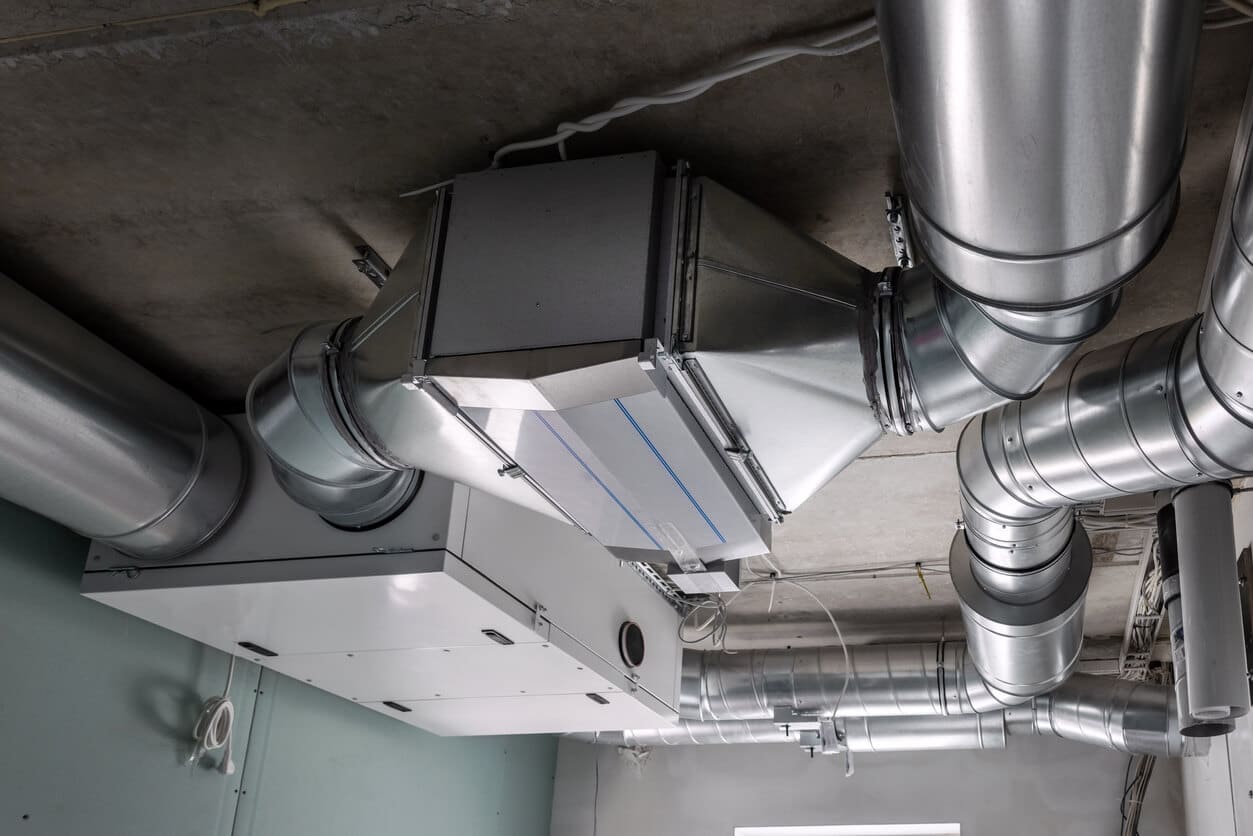Unveiling the Vital Role of Ductwork: The Veins of Climate Control
Air Conditioning
Unveiling the Vital Role of Ductwork: The Veins of Climate Control
When it comes to climate control in both residential and commercial properties, there’s a hidden hero working tirelessly behind the scenes – ductwork. Often overlooked, the intricate network of ducts running through a building, connected to heating, ventilation, and air conditioning (HVAC) systems, is akin to the veins in our bodies, ensuring that the air inside stays fresh and comfortable regardless of the weather outside. In this blog, we’ll delve into the crucial role of ductwork installation and why it’s an integral part of maintaining an optimal indoor climate.
What is Ductwork?
Ductwork forms a vital part of the ventilation system and is responsible for distributing air through HVAC systems. Whether it’s freezing or sweltering outdoors, the ductwork plays a pivotal role in keeping the indoor air quality at a comfortable and consistent level. If the HVAC system is the heart of climate control, then ductwork can be aptly described as the veins that transport the lifeblood of conditioned air.
What Does Ductwork Do?
The process begins with air being drawn from the property into the heater or air conditioner, where it undergoes heating or cooling. Once this process is complete, the conditioned air is then redistributed back into the property through the intricate network of ducts.
Both the intake and output of air are critical for maintaining heating and cooling systems. Without properly designed and installed ductwork, the air pressure won’t be optimal, and climate control will inevitably suffer.
What Is Ductwork Installation?
Ductwork installation encompasses the process of setting up the ducts for heating, ventilation, and air conditioning systems. It extends beyond HVAC systems and can also include waste extraction systems, vacuum systems, and dust & fume extraction systems.
A skilled ductwork installer is like a conductor, matching the ductwork to HVAC equipment and fine-tuning it for optimal efficiency, comfort, and longevity.
A well-executed ductwork installation is the key to keeping you comfortable and maintaining the temperature in your home. In contrast, poor installation can lead to problems ranging from air leakage to the complete failure of the heating or air conditioning system.
How Often Should Ductwork Be Replaced?
Ductwork, like all things, deteriorates over time. The ducts undergo thermal stress and vibrations, expanding during winter heating and contracting during summer cooling. The ductwork can even pull itself apart if it isn’t properly joined.
Typically, ductwork has a lifespan of around 20-25 years. However, if your ductwork is over 15 years old, it’s wise to consider replacement. Beyond this point, ductwork can significantly deteriorate, affecting the efficiency of your HVAC system.
How Long Does Ductwork Installation Take?
In a residential setting, the installation of a new HVAC system and ductwork typically takes about 1 or 2 days. Commercial installations may take longer, depending on the scope of the work required. Accessibility to the ductwork also influences the installation timeline, with easily accessible ducts reducing installation time.
How to Choose a Ductwork Installer
Selecting the right ductwork installer is crucial. A reputable installer will guide you in making the right choices for your property, ensuring the best value for your money. Here are some tips to help you find the right installer:
- Get estimates from multiple installers: It’s advisable to obtain estimates from at least three different HVAC or ductwork installers. Look for experienced companies, check their insurance coverage, and read online customer reviews and testimonials.
- Ask for guarantees: A reputable company will visit your property to understand your needs and identify potential issues. Ask for guarantees on their workmanship to ensure they can complete the installation job to your satisfaction.
- Seek value for money: A good HVAC/ductwork installation company can provide insight into the price and quality of different systems. They can also calculate annual operating costs for heating and cooling. Look for those that offer affordable financing options and service and maintenance plans.
- Insurance coverage: Confirm that the installer has liability insurance for ductwork installation. This provides peace of mind, knowing they are covered for any accidental damage that may occur during the installation.
In the decision to install a new HVAC system, the role of a professional installer and early consideration of ductwork are of paramount importance. While a quality ductwork installation may come at a slightly higher cost, the long-term benefits and value it provides are well worth the investment. It ensures that the veins of climate control continue to circulate comfort and well-being throughout your property.
For further information about City Contractors and our services, please do not hesitate to get in touch.
We are always happy to help.
Tel: 01634 616 745
Email: [email protected]
Air Conditioning
Unveiling the Vital Role of Ductwork: The Veins of Climate Control
Contact Us
For further information about City Contractors, please do not hesitate to get in touch. We are always happy to help.

